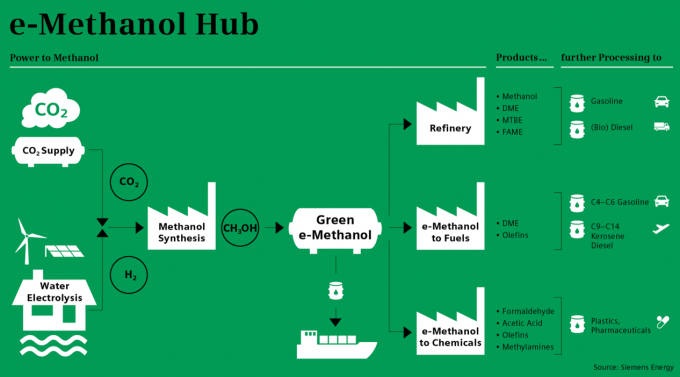Urgent call for breakdown of cargo onboard as General Average declared on Dali
Singapore-based Grace Ocean has officially declared General Average on its vessel, the Maersk-chartered and operated ...

In further evidence of Maersk going all-in on green methanol, the cash-rich shipping giant has announced six major agreements to source as much as 1.2m tonnes of bio- and/or e-methanol every year for bunkering its vessels.
European Energy, Orsted and Proman plan to have 700,000tonnes/annum (t/a) of production capacity online between them by 2025, from production facilities based in the Americas.
Meanwhile, WasteFuel of the US and China’s CIMC Enric and GTB have agreed to ramp up production of bio-methanol by 500,000 t/a between them after 2025, offering ample bunkering opportunities for vessels on Asia-Europe trades.
Maersk currently has 12 x 16,000 teu green container vessels currently on order, and says that the agreement will be more than enough to provide it with sufficient fuel. Maersk CEO of fleet & strategic brands, Henriette Hallberg Thygesen, said that green methanol was “the only market-ready and scalable available solution”.
Crucial to the agreement is the distinction between ‘green’ methanol and its ‘grey’ counterpart, which is available in abundant supply around the world, but is generated using steam-reforming from fossil feedstocks, often coal, making it a worse CO2 emitter, on a well-to-wake basis, than heavy fuel oil.
Green methanol emits CO2 when burned, but it is refined from residual feedstocks such as agricultural waste, meaning that more carbon is not added to the atmosphere in the course of burning it to fuel a ship. Maersk has calculated that according to its green criteria, only 30,000 t/a of green methanol would be available for ship fuel as supplies stand in 2022.
GTB president Junhao Zhu said that ramping up green methanol production in China for Maersk would have the knock-on effect of “…also contributing to reduce China’s dependence on energy imports such as oil and LNG”.
He added: “The green methanol produced will rely entirely on resources available in China.”
Like hydrogen, green methanol can also be used in a fuel cell, which could theoretically offer better efficiencies than by using a conventional genset.
However, methanol is not without competition, with the announcement that four 14,000 teu containerships under construction at Jiangnan shipyard for Pacific International Lines will be powered by WinGD X-92DF2.0 engines designed to run on ammonia.
Comment on this article